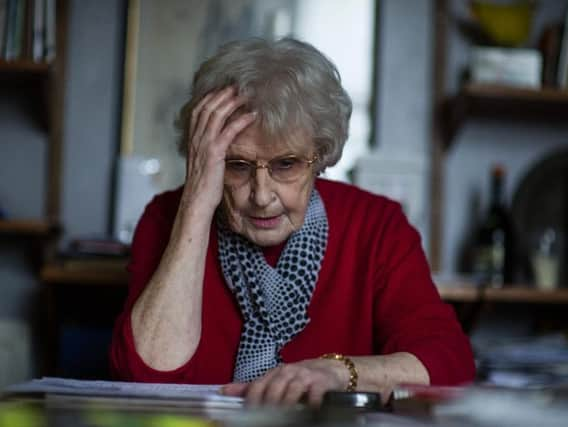Scottish life expectancy improves but still lags behind England


The gap between male and female life expectancy has also decreased. Most recently (2014-16), a baby girl born in Scotland could expect to live for 81.2 years and a baby boy could expect to live until he was 77.1 years.
Tim Ellis, the Registrar General of Scotland, said: "Whilst it is good news that people in Scotland are living longer, recent trends show the increase in life expectancy has been slowing in Scotland as well as the rest of the UK.”
Advertisement
Hide AdAdvertisement
Hide AdLife expectancy for those born in 2014-2016 was 77.1 years for males and 81.2 years for females.
Over the past 35 years life expectancy in Scotland has increased by 8.0 years for males and 5.9 years for females.
Female life expectancy has remained higher than male life expectancy throughout the last 35 years. However, the gap between them has decreased from 6.2 years for people born in 1980-1982 to 4.1 years for people born in 2014-2016
The 2014-based population projections for Scotland project that life expectancy will continue to increase, reaching 82.3 years for males and 85.0 years for females by 2039.
Between 2013-2015 and 2014-2016 life expectancy remained virtually unchanged. Life expectancy at birth increased by 0.01 years for females and decreased by 0.02 years for males.
There was also very little change between the 2012-2014 and 2013-2015 life expectancy estimates, indicating that life expectancy is stalling in Scotland.
Life expectancy at birth in Scotland is 2.1 years lower than the UK figure for males (79.2 years) and 1.7 years lower than the UK figure for females (82.9).
The figures also show estimate that in 2016 there were 910 centenarians living in Scotland, an increase of 57 per cent from the estimate of 580 in 2006.
Advertisement
Hide AdAdvertisement
Hide AdThe male centenarian population more than doubled (from 50 in 2006 to 120 in 2016), while the female population increased by 49 per cent (from 530 in 2006 to 790 in 2016).
There are many more women who live for over 100 years than men, reflecting the longer life expectancy of females. In 2016, there were 790 female centenarians (87 per cent of all centenarians) compared with 120 men aged 100 or over.
The ratio of male to female centenarians has increased to 15 men per 100 women in 2016 compared to 9 men per 100 women in 2006. This indicates that the gap between men and women’s life expectancy has decreased.
Since 2006, the number of centenarians relative to the rest of the population has increased from 1.1 to 1.7 centenarians for every 10,000 people in the total population in 2016.
The number of people aged 90 to 99 increased from 28,430 in 2006 to 40,160 in 2016, an increase of 41 per cent.